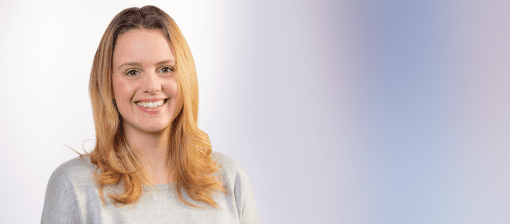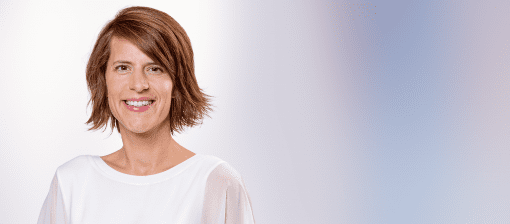Umicore’s response to the article and documentary published by the RTBF about radioactive waste in Belgium
Umicore’s response to the article and documentary published by the RTBF about radioactive waste in Belgium
Following the report broadcast by RTBF on 9 December about radioactive waste management in Belgium, Umicore wishes to correct the data that was presented in an erroneous or misleading manner during the broadcast.
First, it is essential to clarify that the levels of radioactivity as measured by Greenpeace near the Umicore plant in Olen are very low and, contrary to the insinuations made during the broadcast, do not in any way constitute a threat to human health or the environment. In fact, Greenpeace recorded levels of radioactivity of 1 to 10 microsieverts per hour, which is between one hundredth and one thousandth of the exposure reference not to be exceeded on an annual basis. In other words, one would have to stand still between 100 and 1,000 hours on this walking trail to reach the reference value. By way of comparison, a medical CT-scan exposes us to 5,000 microsieverts, or 500 to 5,000 times more than the measurements taken in Olen. In the report, there is confusion between measurements expressed in millionths of a Sievert (microsievert) and reference values expressed in thousandths of a Sievert (millisievert) which is likely to mislead the public.
Furthermore, the comparison made during the report between the cost of treating radioactive waste from nuclear power plants and the residues stored at the Umicore site in Olen is irrelevant. Waste from nuclear power plants is category C waste (according to the classification of the International Atomic Energy Agency) which is highly radioactive and generates significant heat. This waste has to be buried at a depth of several hundred meters, which explains the particularly high cost of its treatment. The residues present on the Umicore site (essentially category A residues and a small quantity of category B resulting from production stopped since 1970) are of very low radioactivity and are stored according to the guidelines set out by the relevant federal agencies. Strict inspections are carried out regularly by these agencies. The provisions set aside by Umicore to meet its obligations are sufficient and any insinuations to the contrary are unfounded.
Finally, Umicore answered all the questions asked by the RTBF contrary to what was claimed during the broadcast. The company is managing the environmental legacy of decades of industrial activity in a transparent, proactive and responsible manner and deplores that erroneous or misrepresented data have been disseminated in this way.
Réponse d'Umicore à l'article et au documentaire publiés par la RTBF sur les déchets radioactifs en Belgique
Suite au reportage diffusé par la RTBF le 9 décembre concernant la gestion des déchets radioactifs en Belgique, Umicore tient à corriger les données qui ont été présentées de façon erronée ou trompeuse lors du reportage.
Tout d’abord, il est essentiel de préciser que les taux de radioactivité tels que mesurés par Greenpeace près de l’usine d’Umicore à Olen sont très faibles et, contrairement aux insinuations du reportage, ne constituent en aucune manière une menace pour la santé ou pour l’environnement. En effet, Greenpeace a relevé des taux de radioactivité de l’ordre de 1 à 10 microSievert par heure, ce qui correspond à un centième ou un millième de la norme d’exposition à ne pas dépasser sur base annuelle. En d’autres mots, il faudrait s’arrêter entre cent et mille heures sur ce sentier de promenade pour atteindre la norme. A titre de comparaison également, un CT-scan nous expose à 5.000 microSievert, soit un facteur de 500 à 5.000 fois supérieur aux mesures effectuées à Olen. Dans le reportage, il y a confusion entre des mesures exprimées en millionièmes de Sievert (microSievert) et des normes exprimées en millièmes de Sievert (milliSievert) ce qui est de nature à induire le public en erreur.
Par ailleurs, la comparaison effectuée au cours du reportage entre le coût de traitement de déchets radioactifs provenant de centrales nucléaires et les résidus entreposés sur le site d’Umicore à Olen est non pertinente. En effet, les déchets provenant de centrales nucléaires sont des déchets de catégorie C (selon la classification de l’Agence Internationale de l’Energie Atomique) de haute activité et générant une chaleur importante. Ces déchets doivent être enfouis à plusieurs centaines de mètres de profondeur ce qui explique le coût particulièrement élevé de leur traitement. Les résidus présents sur le site d’Umicore (résidus de catégorie A pour l’essentiel et B pour une petite quantité qui résultent de productions arrêtées depuis 1970) sont très faiblement radioactifs et sont entreposés selon les consignes des agences fédérales compétentes en la matière. Des contrôles stricts sont effectués régulièrement par ces agences. Les provisions constituées par Umicore pour faire face à ses obligations sont suffisantes et les insinuations en sens contraire sont sans fondement.
Enfin, Umicore a répondu à toutes les questions posées par la RTBF contrairement à qui est prétendu dans le reportage. La société gère de façon transparente, proactive et responsable l’héritage environnemental lié à des décennies de production industrielle et déplore que des données erronées ou présentées de façon trompeuse aient été diffusées de la sorte.
Umicore biedt antwoord op het artikel en de reportage uitgebracht door RTBF rond radioactief afval in België
Naar aanleiding van de reportage uitgezonden door RTBF op 9 december betreffende het beheer van radioactief afval in België, wil Umicore bepaalde informatie die op misleidende of foutieve manier werd voorgesteld tijdens de reportage, rechtzetten.
Vooreerst is het van essentieel belang om toe te lichten dat de concentratie aan radioactiviteit zoals opgemeten door Greenpeace in de nabijheid van Umicore’s fabriek in Olen zeer laag is en, in tegenstelling tot wat de reportage insinueert, op geen enkele manier een bedreiging inhoudt voor de publieke gezondheid of het milieu. Greenpeace heeft een concentratie aan radioactiviteit opgemeten in een grootorde van 1 tot 10 microsievert per uur, wat overeenkomt met een honderdste of een duizendste van de blootstellingsnorm die op jaarbasis niet mag overschreden worden. Met andere woorden, men zou 100 tot 1.000 uren op dit pad moeten blijven stilstaan om de norm te bereiken. Ter vergelijking, een CT-scan stelt ons bloot aan 5.000 microsievert en ligt dus 500 tot 5.000 keer boven de metingen in Olen. In de reportage worden metingen uitgedrukt in miljoensten aan Sievert (microsievert) en normen uitgedrukt in duizendsten Sievert (millisievert) naast elkaar vernoemd, wat op die manier aanleiding geeft tot misleiding van het publiek.
Daarnaast is de vergelijking die tijdens de reportage wordt gemaakt tussen de kosten voor de verwerking van radioactief afval afkomstig van kerncentrales en de residuen opgeslagen op de site van Umicore in Olen, irrelevant. Het afval afkomstig van kerncentrales betreft ‘Categorie C’ afval (volgens de classificatie van de Internationale Organisatie voor Atoomenergie) met een hoog activiteitsniveau en het scheidt ook een aanzienlijke hoeveelheid warmte af. Dit type afval dient opgeborgen te worden op honderden meters diepte wat de bijzonder hoge kost verklaart voor hun verwerking. De residuen op de site van Umicore (voornamelijk residuen van categorie A en voor een kleine hoeveelheid categorie B afkomstig van productieactiviteiten die sinds de jaren 70 werden stopgezet) zijn in zeer beperkte mate radioactief en werden ter plaatse opgeslagen in lijn met de adviezen van de bevoegde federale agentschappen. Strikte controles worden regelmatig uitgevoerd door deze agentschappen. De voorzieningen die door Umicore werden opgebouwd om aan haar verplichtingen te voldoen zijn voldoende en insinuaties dat dit niet het geval zou zijn, zijn ongegrond.
Tot slot, heeft Umicore op alle vragen die de RTBF gesteld heeft geantwoord, in tegenstelling tot wat beweerd wordt in de reportage. Umicore beheert op transparante, proactieve en verantwoordelijke wijze deze nalatenschap en haar impact op het milieu, als gevolg van decennialange industriële productie en betreurt dat foutieve of op misleidende wijze voorgestelde informatie op deze manier verspreid werd.


